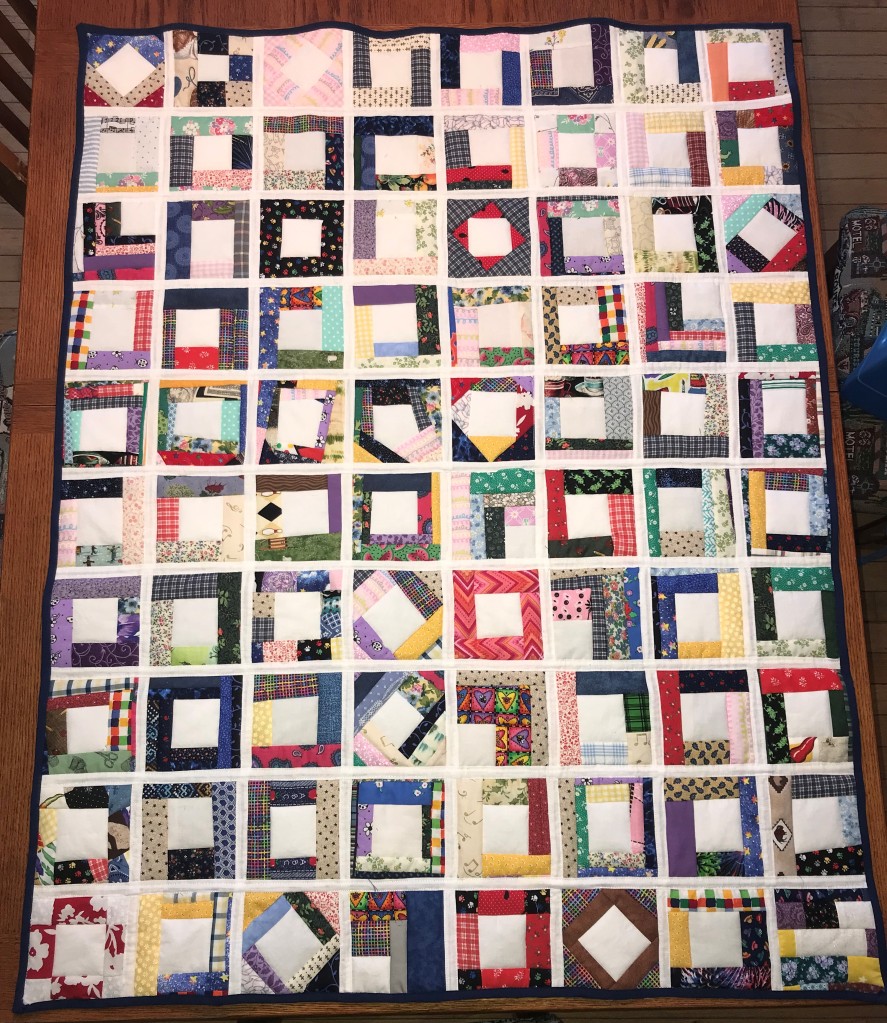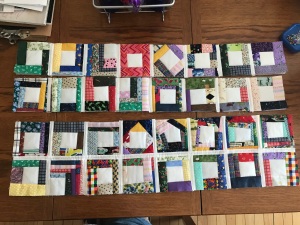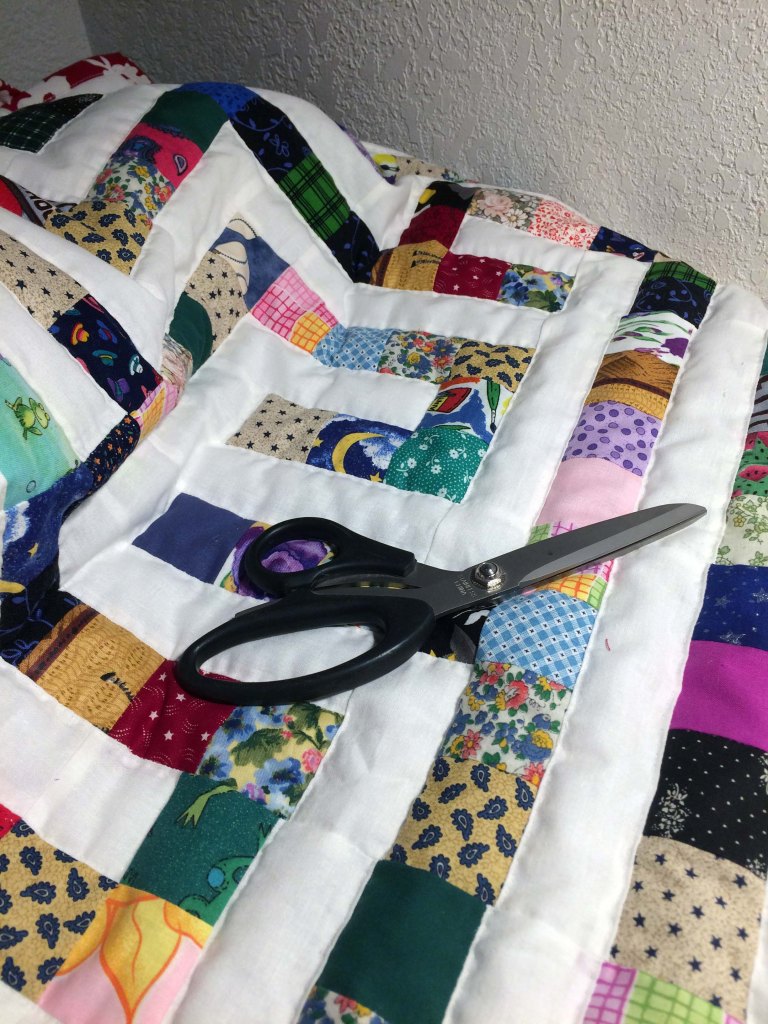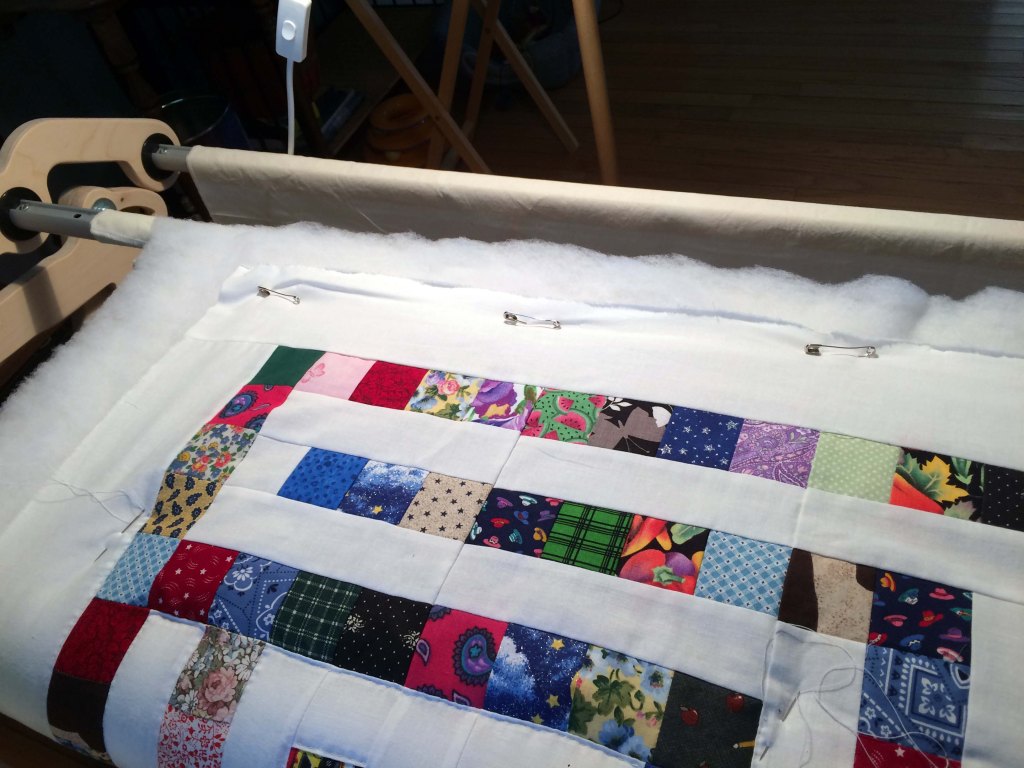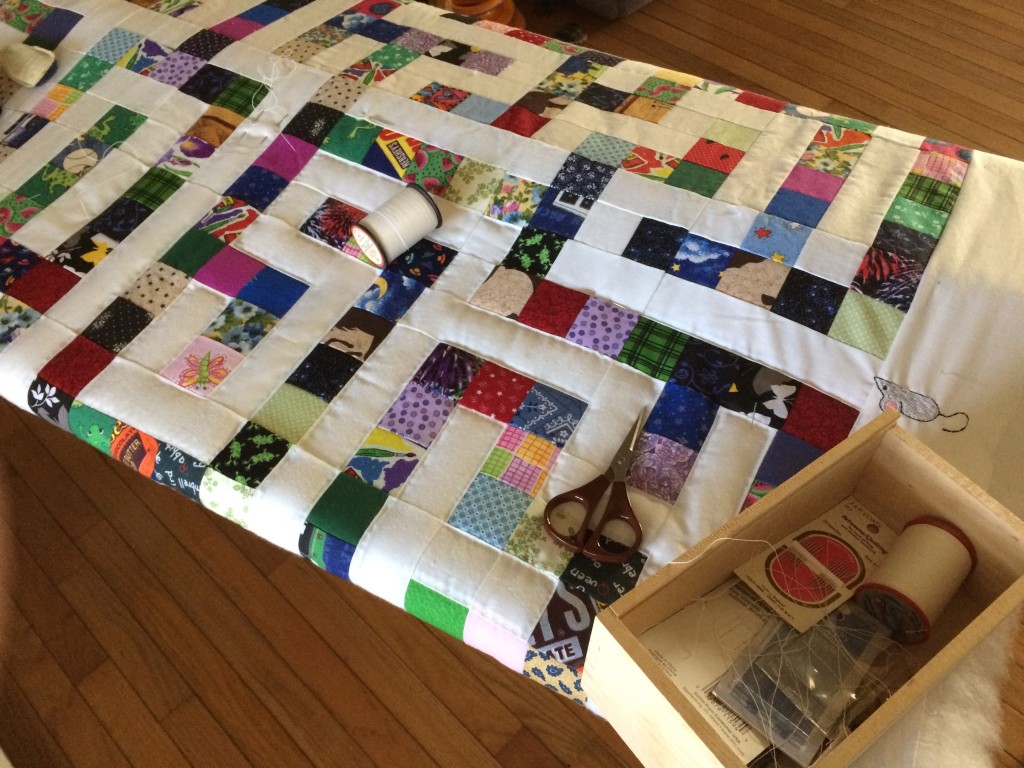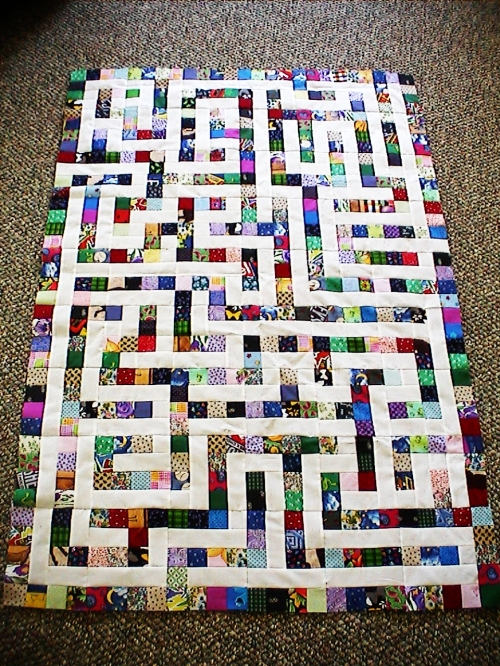I’ve had an unexpected health change. I’m well enough to sew a bit but not at home. My elves brought me the project and a portable machine and all the notions I need. This was actually to be part of a toddler’s Christmas which has been delayed, so it’s right on time.
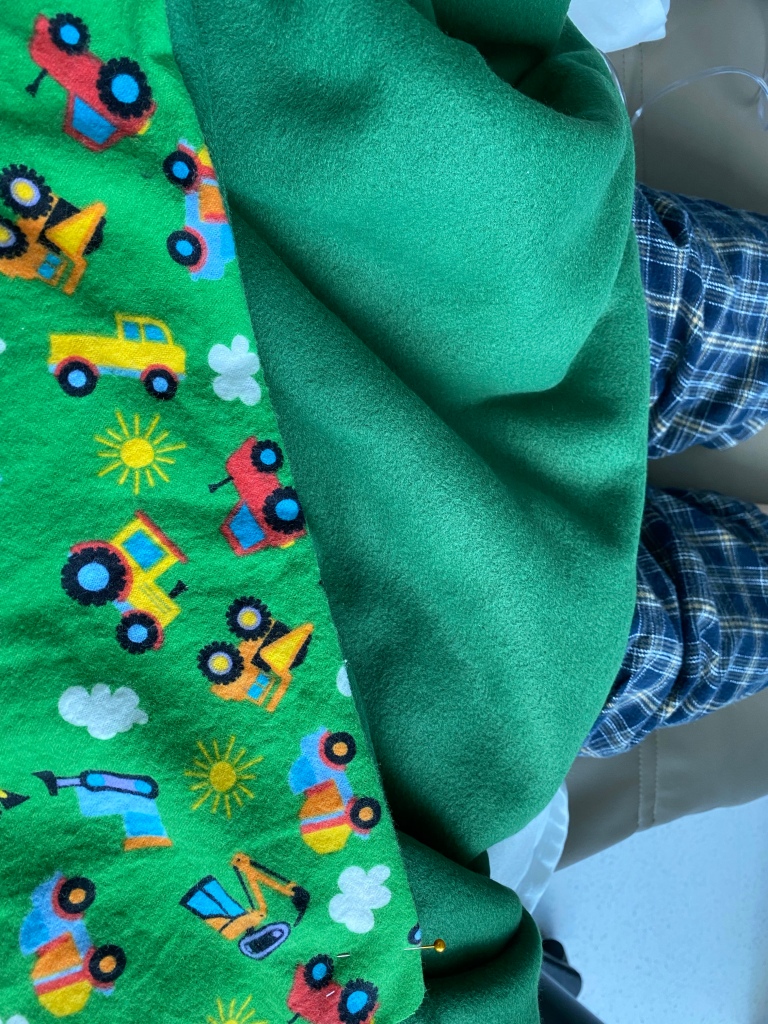
I squared up the flannel first. I did a combination of smoothing it out, folding this way and that, and I’m satisfied it’s as square as if I used my whole work table. I knew the fleece was cut squarely at the store.
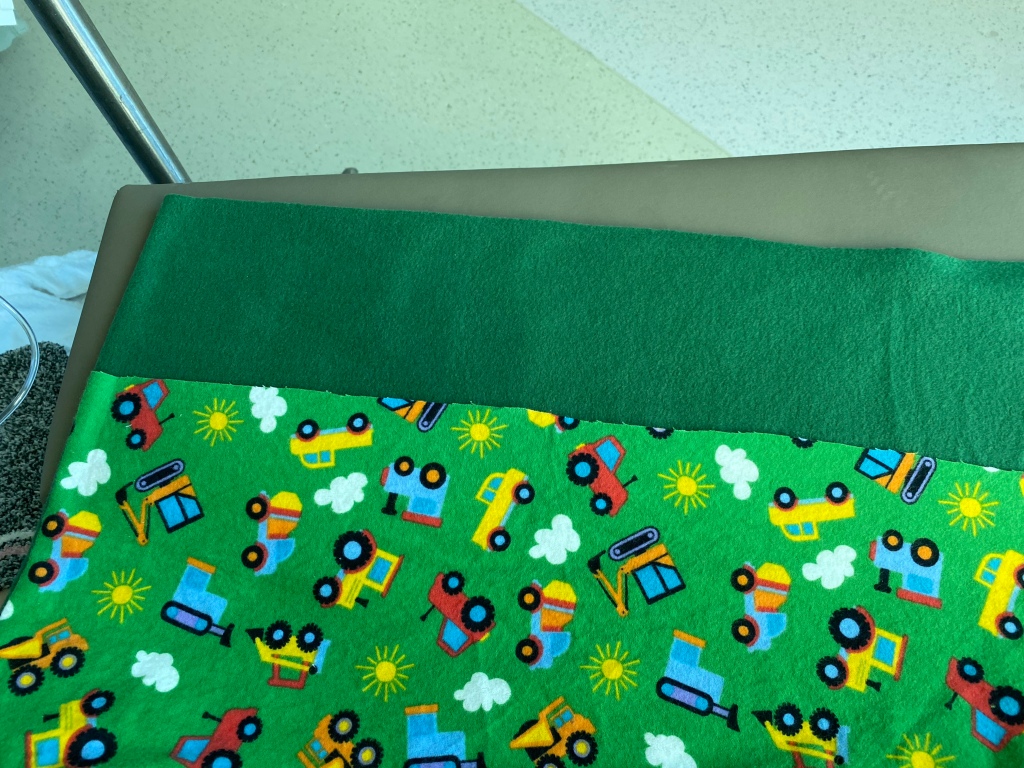
To find the width was no issue with the flannel, that’s obvious. With the fleece I used a corner and brought the two sides together until I could tell which was shorter. I folded the flannel in half-width and the fleece the same, and pinned them together temporarily. I cut the edges of the fleece as straight as I could, actually following the poke holes of the selvage. That will be the edge of the self binding so it won’t need to be folded under again.
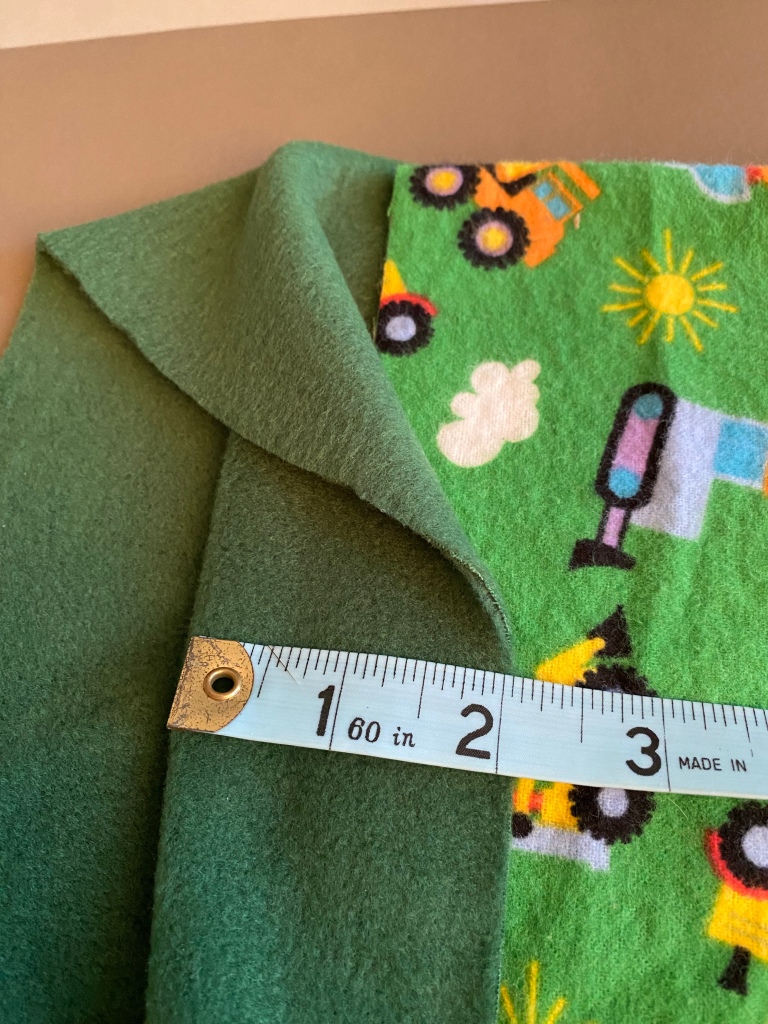
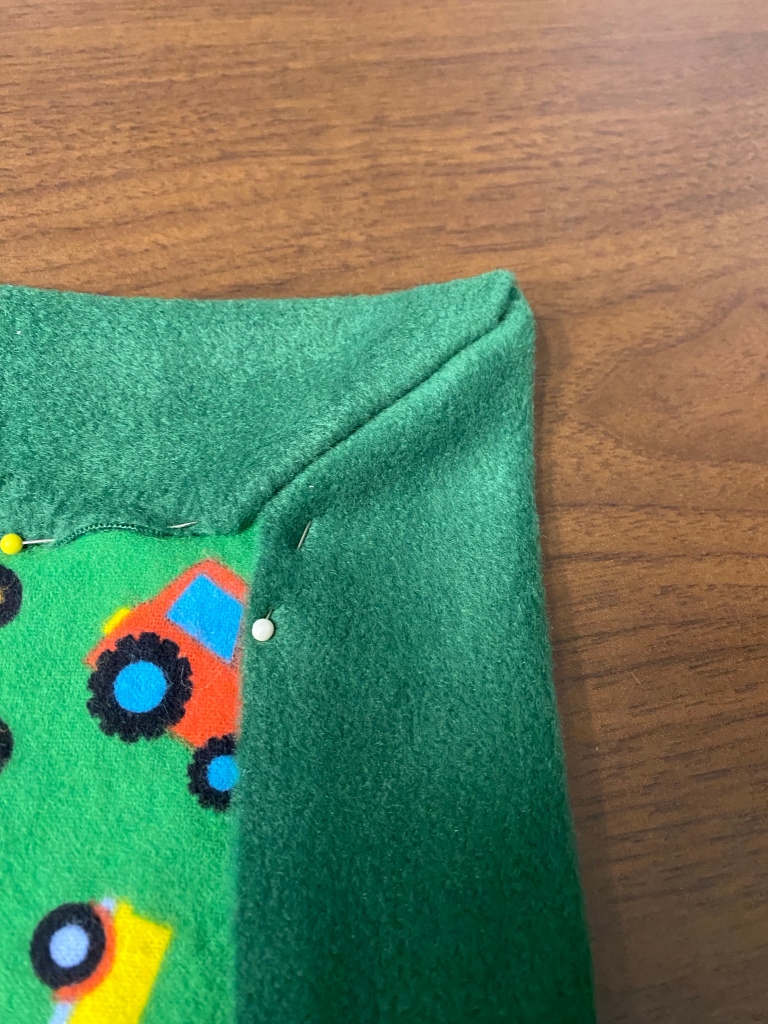
I decided on a 2-inch border. I stitched it down with a wobble stitch all around, mitering the corners. My plan was to stitch the field of the quilt with a right-angle spiral, just to tack the layers together. It should have been an easy finish at that point but I managed to break a needle without having a backup. I sent it along and the boy’s mom will finish for him what I could not.
This quilt, having no piecing and small blocks and seams, worked out very well for eyeballing measurements and getting things close without having to be precise.

